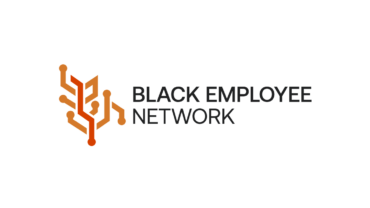Sep 16, 2024 | Inside Thomson Reuters
Safe Settings: A Thomson Reuters campaign to help keep children safe online

The Safe Settings campaign from Thomson Reuters provides parents, caregivers, and concerned adults with critical information to help keep children safe online.
Real online safety starts, and continues, by creating a safe environment to talk openly with children about the dangers of online exploitation. It’s important to create physical safe settings by sharing age-appropriate resources on how kids can safely navigate online, and it’s also important to use the built-in safe settings on the websites and platforms that children access.
Below you will find information and resources to help understand the risk of online child exploitation, how you can take action to help protect children online, and where to access further advice and support if you need it.
We are calling on everyone to support our efforts.
Our ask is simple: we need to inform as many parents, caregivers and concerned adults of the dangers of online child exploitation and equip them with the information they need to help keep children safe.
- Please spread the word and support the Safe Settings campaign
- Follow Thomson Reuters on social media to stay informed, and share the Safe Settings social posts with advice for parents and caregivers (X, LinkedIn, Facebook and Instagram)
What is the risk?
Tragically today a record number of children are being exploited online. No child is immune from falling victim to sexual abuse.
Online child exploitation can take various forms including Child Sexual Abuse Materials (CSAM), sextortion schemes and child sex trafficking. Sextortion is a form of online blackmail where children are tricked online into sending intimate pictures of themselves to people who then threaten to distribute the sexual images unless the victim complies with their demands, often money or additional explicit images.
- 300 million+ children globally under the age of 18 have been affected by online child sexual exploitation and abuse in the last 12 months*
- 1 in 8 children globally have been subjected to online solicitation in the last 12 months*
- 36+ million reports of suspected online child sexual exploitation in the U.S alone in 2023**
- The growing use of Gen AI to produce Child Sexual Abuse Material (CSAM) is further fueling the rising threat to children.
* Childlight Global Child Safety Institute
** U.S. National Center for Missing & Exploited Children
Where are children at risk?
Children can be approached online across a variety of websites and platforms, including social media and gaming platforms. The advancement of technology, and the variety of platforms that exist, have increased the reach and opportunity of abusers.
How to recognize the signs
Learn to recognize what could be online child exploitation
- Someone who sends friend request to multiple children in the same location to appear to be a mutual friend once one accepts
- Someone who seeks to develop a rapport through compliments and shared interests, also known as grooming
- Someone who targets children with limited adult supervision
- Asking a child for sexually explicit images
- Someone who pretends to be younger to initiate contact with child
- AI generated child sexual abuse images shared to extort real images from children
- Financial sextortion where children are tricked into sending intimate pictures of themselves to people who then threaten to distribute the sexual images unless the victim complies with their demands, often money or additional explicit images.
Be aware of the red flags you should watch for in children’s behavior which may indicate they are falling victim to online exploitation
- At home they frequently shut their door when using technology.
- They hide their screen activity from adults.
- Time spent on digital media increases in a noticeable way.
- They share less information about their interactions or activities online.
- They become increasingly possessive over their phone or other devices and become agitated or fearful if someone tries to access it.
- Unexplained sadness, fear, or anxiety.
- Noticeable changes in eating or sleeping habits.
Educate children on the red flags they should watch for when interacting online
- Profiles with limited to no information, only one photo, few friends or followers
- Choppy chat language
- Someone who requests personal information
- Asking them to hop to a different method of communication or a different app
- Offers of incentives such as gift cards, alcohol, drugs, lodging, transportation, or food
- Asking them for sexually explicit images
Approaching online safety with the children in your life
1 – Set ground rules for online activity
Set boundaries which work for you and the children in your life around their internet usage. Cellphones, tablets, and all connected devices should have child privacy protections and monitored by guardians.
2 – Don’t just rely on device settings
Time, attention and active conversations are best for keeping kids safe online.
3 – Understand where your child is online
Take a genuine interest in the technology platforms so you better understand what the children in your life are doing online, and ensure you know who they are talking to online.
4 – Limit internet access
Taking away internet access rarely solves the problem. Instead, limit access so children are not isolated from friends, family and other support systems.
5 – Keep up the discussion regularly
Show that you’re willing to listen and respond calmly by having face-to-face conversations about what happens online.
Actions children can take to protect themselves online
- Do not share their location online
- Make their profiles private
- Do not accept friend requests from people they don’t know
- Remember not to delete chats or pictures as they can be used later for evidence
- Tell a trusted adult to contact law enforcement if they are worried or suspicious
- Do not pay or send more images when you believe you are being a victim of sextortion
- Explain the importance of child privacy settings on devices.
Where can you get further support and advice
Resources to on how to get images taken down if they were shared
Resources on reporting online child sexual exploitation. This includes online enticement of children for sexual acts, extra-familial child sexual molestation, child pornography, child sex tourism, child sex trafficking, unsolicited obscene materials sent to children, misleading domain names, and misleading words or digital images on the internet)
- U.S. National Center for Missing & Exploited Children CyberTip Line
- Know2Protect resources from the US Department of Homeland Security
Resources for additional safety advice and information
-
- NetSmartz: The U.S. National Center for Missing & Exploited Children’s online safety education program for children
- Interpol: Keeping children safe online
- Canadian Centre for Child Protection
- Better Internet for Kids EU
- UK Safer Internet Centre
- WeProtect Global Alliance against child sexual exploitation and abuse online
- U.S. Department of Justice: Keeping Kids Safe Online
About the Thomson Reuters Safe Settings Campaign
At Thomson Reuters we’re focused on leveraging our technology and expertise to help tackle this pressing issue. We all have a responsibility to help keep children safe online.
As well as providing information to parents and caregivers, we also want to drive collective action among a broader community of organizations such as across companies, the public sector and NGOs. Together we can have a collective and ongoing impact to stop online child exploitation.


